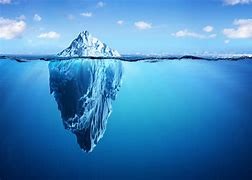At the April meeting Ann Murray, assisted by Ian, gave a very interesting presentation about glaciers and icebergs.
We learnt that icebergs:
– Are a floating mass of freshwater ice that has broken from the seaward end of either a glacier or an ice shelf.
– About 90% of the total volume of the iceberg is under water always.
– The density of the iceberg is about 10% lower than the density of sea water, so 1/9 of it stays on the surface until it melts.
– There are different types of iceberg classified by size and shapes.
Ann included some photographs of glaciers taken when they visited the Rockies and explained how they are important indicators of global warming and climate change in several ways. Melting ice sheets contribute to rising sea levels and as ice sheets in Antarctica and Greenland melt, they raise the level of the ocean affecting plant and animal life.
In May we meet on Friday 21st at 10.00 am via Zoom and I will be looking at aspects of flooding, its impact on the environment and the science and technology contributing to flood control.
David Rose
